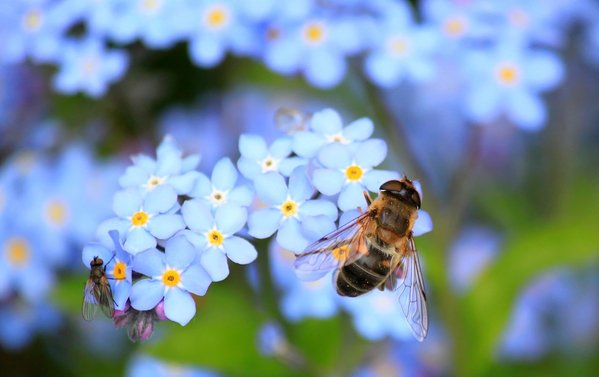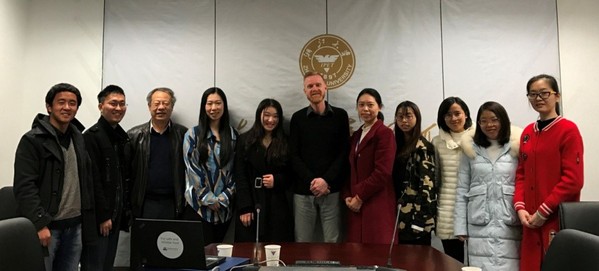Small rapid-test strips aid in bee protection
[Message from the editor: Today marks World Environment Day. Through technology transfer, ZJU scientists have been working with their global partners to find innovative solutions to the grand challenge of environmental pollution. Here’s one example from the College of Agriculture and Biotechnology.]
Honey bees are a kind of common social insect. Not only do they produce honey and beeswax, but they also contribute to the world’s agricultural production.
The Food and Agriculture Organization (FAO) points out that more than 80 percent of the world’s crop varieties rely to some extent on bee pollination to improve their yield and quality. Were it not for bees and other pollinators, agricultural products, such as coffee, apples, almonds, tomatoes and cocoa, would be virtually fruitless.

Evidence reveals that the population of bees is currently on the decline all over the world. One of the major threats to the expeditious decrease in the bee population is the use of pesticides.
Neonicotinoids are the most widely used type of insecticides in the world. They are highly systemic and therefore toxic to bees. Even at low doses, they may pose serious health hazards to bees: reducing their capacity for learning and memory and undermining their immune function.
Thus, developed regions such as the European Union have repeatedly tightened restrictions on the use of neonicotinoids in order to reduce the threat to bees since 2013.

In order to track and detect insecticide residues, there is an urgent need of tools capable of achieving rapid on-site detection to monitor neonicotinoid residue levels in nectar crops and the entire hive environment. The research team led by Associate Professor GUO Yirong at the Institute of Pesticide and Environmental Toxicology in Zhejiang University has long engaged in the development of rapid methods for detecting pesticide residues in environmental and agricultural samples. In recent years, they have developed a lateral flow chromatographic device based on the antigen-antibody immuno-reaction (immunoassay strips), which can be used to screen out six types of neonicotinoids on site. Since 2017, the research team has entered into the partnership with Wageningen Food Safety Research (WFSR) at Wageningen University & Research. The immunoassay strip can be used for bee protection by detecting neoincotinoid residues in various samples, such as foraging plants, bee bodies, pollen, water and honey.

Collaboration with WFSR
Compared with traditional detection methods, this lateral flow device is marked by its operability, sensitivity, simplicity and rapidity. It is also a useful complement to the cholinesterase inhibition method, a widely-used rapid pesticide residue detection method that can be only applied to screen organophosphorus and carbamate pesticides at the same time. At present, the neoincotinoid residue rapid-test strip has been evaluated by the WFSR. It is currently being promoted by Waterdrinker, a grand flower company in the Netherlands and being applied to the EU-funded B-GOOD (Giving Beekeeping Guidance by Computational-assisted Decision-making) project.
This rapid detection technology can be assembled into multiple series of testing strips and applied to fruits, tea and other agricultural products. Since 2016, cooperation with the Tea Research Institute in the Chinese Academy of Agricultural Sciences has contributed to the extensive application of the rapid detection strip in monitoring water-soluble pesticide residues in the national tea industry system. With the accuracy rate above 90%, the rapid-test strip can effectively control the application of neoincotinoids in agricultural production, which is of tremendous significance to improving the agricultural and ecological environment, protecting public health and promoting the sustainable development of agriculture.
Photo credit: Research team led by Associate Professor GUO Yirong